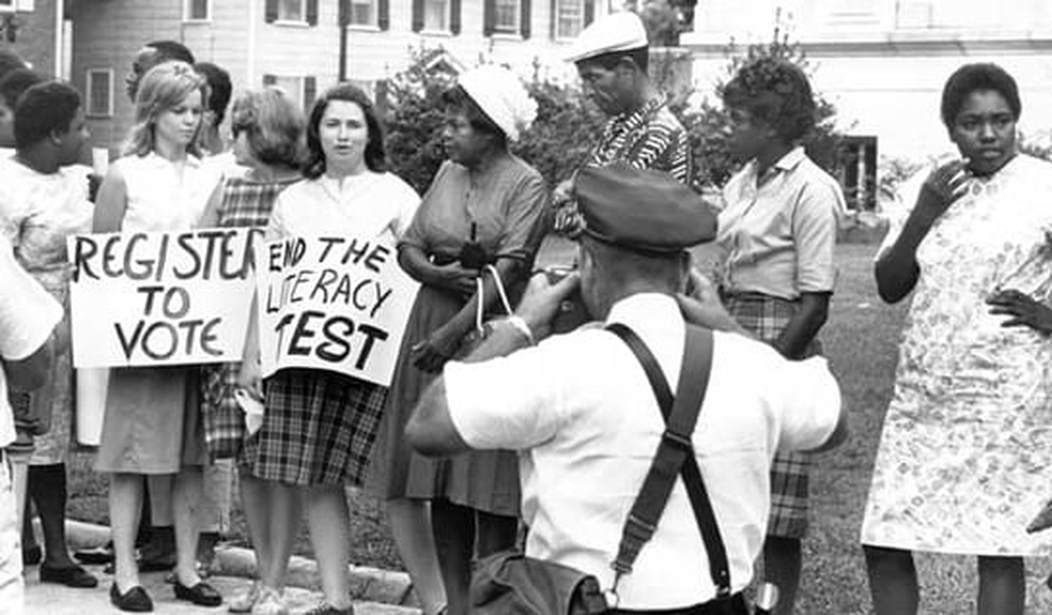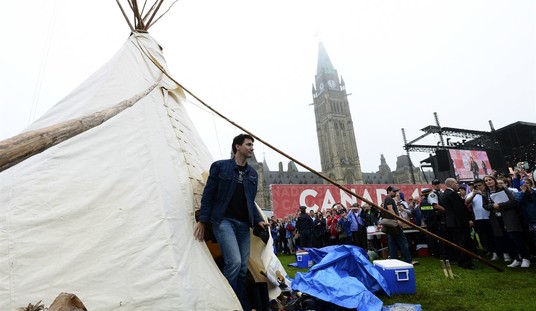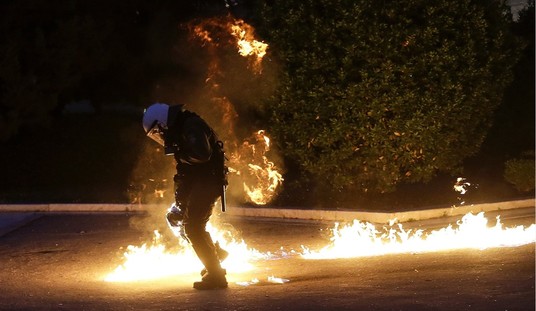Fifty years ago, civil rights activists began Freedom Summer. Or, I should say, some people who held themselves out as “civil rights activists” did so.
PJ Media’s Ron Radosh recently referred to a PBS documentary on the event, which the public network described as the summer when “more than 700 student volunteers from around the country joined organizers and local African Americans in a historic effort to shatter the foundations of white supremacy in what was one of the nation’s most viciously racist, segregated states.” More modestly stated, it was an effort to register black voters en masse.
Or was it? A recent revelation should cause objective historians to take a very hard second look at how and why Freedom Summer came to be, and at what really transpired in Mississippi that summer. From here, it appears that a campaign which has long been considered a civil rights movement milestone was really the beginning of the legitimate civil rights movement’s interment.
A June 19 Politico Magazine remembrance by historian Josh Zeitz shed new light on its leaders’ true intentions.
Zeitz apparently feels that he’s now in the historical clear to acknowledge and even celebrate motivations which, if widely known at the time, would have outraged millions of Americans of good will who had been moved by the nonviolence of Martin Luther King Jr. and his followers to accept the need for landmark legislation — the Civil Rights Act of 1964 — to enforce the right to vote, and to formally outlaw segregation in schools, workplaces, and public accommodations based on race, color, religion, sex, or national origin. Though it wasn’t formally passed by the House and signed by President Lyndon Baines Johnson until July 2, the legislation’s passage had been certain since June 19 when it cleared the Senate.
Zeitz, an open Democrat, lays bare what he admiringly acknowledges “was in many ways a very cynical strategy.”
Was it ever, as it involved deliberately placing northern white kids in mortal danger:
The architects of Freedom Summer were shrewd, pragmatic veterans of a brutal street fight … they wagered that if white students from prominent Northern families were arrested, beaten and illegally jailed—as they fully expected they would be—the federal government would finally recognize its responsibility to intervene in Mississippi.
…
The goal, explained (organizer Bob) Moses in advance of the summer project, was to create a political crisis. “Only when metal has been brought to white heat can it be shaped and molded,” he said. John Lewis … predicted that if white students were placed in harm’s way, “the federal government will have to take over the state … out of this conflict, this division and chaos, will come something positive.”
…
Though Moses rejected the charge that … (they) planned “to get some people killed so the federal government will move into Mississippi,” he also maintained that “no privileged group in history has ever given up anything without some kind of blood sacrifice.”
Zeitz’s attempt to draw a parallel between Freedom Summer and the previous year’s Birmingham Campaign led by the Rev. Martin Luther King Jr. falls flat. Of course, Birmingham organizer King knew that serious violence in what was then known as “Bombingham” was virtually guaranteed. But he didn’t need to, and didn’t, recruit naive white Northern guinea pigs who could not possibly have been prepared to fully protect themselves in an incredibly hostile environment to ramp up the national pressure which became the catalyst for achieving passage of the Civil Rights Act. It should also not be forgotten that Mississippi’s culture of racial violence at the time was far worse than Alabama’s, or that King was not involved with Freedom Summer.
Organizers got their “blood sacrifice” even before the white students from up north arrived, when on the night of June 21-22, 1964, James Earl Chaney, Andrew Goodman, and Michael “Mickey” Schwerner were murdered. Two of the three were from the “privileged group” Moses and Freedom Summer organizers sought to endanger.
I’m not convinced that Freedom Summer needed to happen at all.
Its two-week training event for student volunteers began on June 14 at the Western College for Women in Oxford, Ohio (now part of Miami University). By its conclusion, as noted above, the Civil Rights Act was a fait accompli, and the three murder victims had gone missing. So why, especially given the clear and present danger, would Freedom Summer’s leaders not have decided to give the movement’s crowning legislative achievement a chance to work? I would argue, given the subsequent activities of many involved, particularly Che Guevera fan and African dictator-loving black segregationist Stokely Carmichael, that many of them had no desire to see the improvement in race relations the act aimed and seemed destined to foster.
It’s not as if the federal government stood still after the act’s passage. In a late-June op-ed in the Los Angeles Times, Robert Schenkkan showed that President Lyndon Baines Johnson went all-in with tangible enforcement:
Jim Crow began to die, in part because LBJ well understood that passing laws was one thing and enforcing them quite another. Just as he had been determined to muscle the bill through Congress, Johnson was determined to see the law carried out by every executive power at his command.
…
Swift directives from the White House to the Department of Health, Education and Welfare to cease giving federal dollars to segregated hospitals transformed facilities overnight.
…
[A] quick ruling by U.S. Commissioner of Education Francis Keppel announced the withholding of federal funds ($4 billion) from school districts in 17 long-segregated states. In one year, there were more public school desegregation commitments than had been achieved over the previous decade.
…
In 1965, the Voting Rights Act was the final nail in the coffin of Jim Crow.
Schenkkan then made a serious historical error when he claimed that “six days later, Watts erupted in violence, the first in a series of urban riots” after the law’s passage. That just isn’t so. Watts wasn’t even close to the first.
It’s important to note that there were no significant race riots in the U.S. for 19 years until the summer of 1963 in Birmingham. There was absolutely no reason to expect serious outbursts of violence after the Civil Rights Act’s passage.
But there were several. The first took place just two weeks later, when New York City’s Harlem burst into flames in an event described by what would become the “black power” movement as “the line in the sand to every ghetto in the country.” Over the next six weeks, race riots spread to six other cities, four of which just so happened to be easy driving distance from New York.
Is it a just an odd coincidence that many of those involved in Freedom Summer who ended up leading a “black power” movement which actively encouraged the 1960s race riots had significant Gotham and Harlem connections?
Is the conventional wisdom that the 1960s race riots and the fractured race relations and white flight to the suburbs they caused were simply manifestations of long-simmering black community frustrations triggered by specific events, or were they proactively fueled by people determined to ensure that the legitimate civil rights movement’s milestone accomplishment would not work out as hoped, and that race relations would not improve?
Questions such as these are why I wrote earlier that objective historians need to take a very hard second look at that era. This cadre would appear not to include Josh Zeitz. He might not be inclined to brag about what he might find.








Join the conversation as a VIP Member